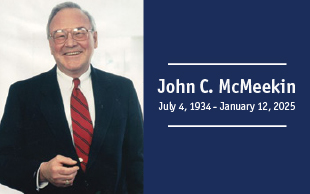In a process overseen by Anne Saporito, senior manager of training and organizational development and Jo Surpin, a consultant from Strategic Health Alliance, more than 100 PHMC and affiliate staff members from across the organization joined together in May 2010 for a series of roundtable discussions. “Relooking at the organizational plan gave us an opportunity to conduct a good analysis of the strengths and weaknesses of our organization,” says PHMC President and CEO Richard J. Cohen. “It was a very inclusive process and I’m pleased with the outcome.”
Relooking at the organizational plan gave us an opportunity to do a good analysis of the strengths and weaknesses of our organization.”
The process deliberately involved young leadership. “PHMC takes succession planning very seriously,” says Saporito. “An organization is only as good as its staff, so it’s important to look five and 10 years down the road and integrate viewpoints from all stakeholders.” Key young leaders joined senior staff to review the organization’s existing mission and vision and use them as starting points to identify goals. “One of the things of great value at PHMC is that you have a lot of people with a great deal of history that balance the future leaders of the organization,” says Surpin. “It’s very important for us to get everybody’s input.”
Katherine Harvey, director of case management and program standards for PHMC’s Forensic Services, has been working at PHMC close to 10 years. She is one of the young leaders who participated in the strategic planning process. Initially Harvey worked as an evaluator in the clinical evaluation unit within the Forensic Intensive Recovery (FIR) program, which assesses criminal offenders for chemical dependency, refers them to community-based providers for residential, intensive outpatient and regular outpatient treatment services and provides case management services for FIR program participants. Formerly a substance abuse counselor with a background in social work, Harvey quickly embraced the work of the organization. “I appreciated the diversity of the programming at PHMC and I knew I wanted to stay,” she says.
Harvey moved on to senior evaluator and then to evaluation supervisor before taking her current position. During her time at PHMC, she also completed her master degree in social work at Widener University, encouraged by supportive mentors in senior management. She appreciated the opportunity to directly contribute to the strategic planning sessions. “I was ecstatic about being involved in the process,” says Harvey. “It gave me a voice. It gave me a chance to give input on an intimate level.” She used what she learned during the strategic planning process to share organizational information with her staff. “As a leader, I ask myself what I can do in my day-to-day tasks to empower and train my supervisors,” she says. “The plan encourages us to constantly communicate key organizational developments with staff.”
As the process unfolded, the group identified and developed six key goals for the organization: public health issues, service to community, quality of service, infrastructure, financial viability and growth and organizational vitality. “It’s unusual to have a corporation like PHMC that has direct service, advocacy and many other various components. Re-strategizing allows you to maximize those synergies,” says Surpin. “It’s important to pause and see whether what you’re doing makes sense.”
The new strategic plan, which was approved by the board in December 2010 to cover the three-year period from January 2011 through December 2013, lists 27 objectives under six overarching goals. “If you look back over our plans in the last 25 years, the new one hasn’t diverged much,” says MacBride. “We have some basic values that have always been in place, but we were able to clarify our position and set our direction with very clear goals.”
Says Harvey, “The new strategic plan makes me feel proud to work at PHMC. I really feel invested.”
PHMC's Goals:
Excerpted from the 2011-2013 Strategic Plan
- Public Health Issues
Lead in the identification of and response to existing and emerging public health issues. - Service to Community
Initiate, expand and maintain programs and services that are best aligned with the needs of the people and communities we serve, always inclusive of the underserved and those hardest to reach. - Quality of Service
Identify and implement metrics to assess the quality, safety and effectiveness of programs and services provided, to ensure accountability. - Infrastructure
Create and maintain the organizational and operational infrastructure needed to support programs, services and growth. - Financial Viability and Growth
Promote financial viability and growth through existing and new programs, services and affiliations. - Organizational Viability
Support and recognize staff contributions with career pathways across the enterprise. Ensure future leadership and governance through succession planning. Ensure and promote a positive public image and reputation for the organization.





